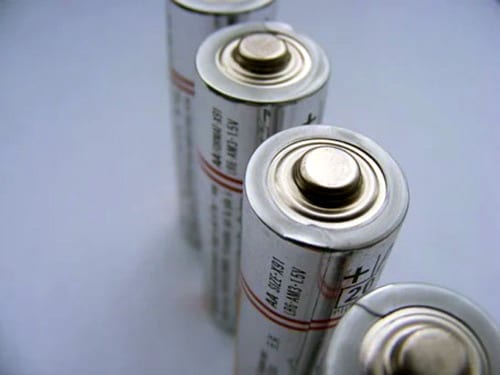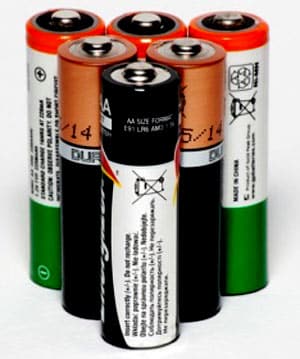Batteries nowadays are one of the most important components of electronic appliances and are used in almost every portable electronic device. From Drones to phones, and tablets to automobile EVs, one common electronic component you find is the battery.
The current battery market reached around USD 113.4 billion. This market keeps increasing with the development of EVs and the expansion of portable electronics and wearable electronic devices.

From a range of devices like Phones to EVS to drones to automobiles, the battery and type also differ and are based on use cases.
So let’s understand the depth of these battery types.
The first main classification of battery is on two types i.e. primary batteries and secondary batteries.
Primary Battery
Primary batteries are non-rechargeable disposable batteries. Once fully drained, primary cells can’t be recharged and you can say it’s a single-cycle battery. They consist of the chemical inside it that gets consumed with time and use and once it’s fully drained, you need to dispose of it.
Types of Primary Battery
Alkaline Batteries:
This type of battery drives the energy by a reaction of zinc metal and manganese oxide and we named it an alkaline battery because instead of using an acidic electrolyte, we use an alkaline electrolyte like potassium hydroxide (KOH).

Advantages:
- More life
- Shelf life is more
- Small in size
- Highly efficient
- Low internal resistance so that discharge state in idle state is less
- Leakage is low
Aluminum-Air Batteries:
This is the highest energy density battery and produces energy from the reaction of oxygen with aluminum. Once the aluminum is consumed and all aluminum gets reacted with air oxygen, we can’t use this battery further and we need to dispose of it after a single use.
Dry Cells:
This is another type of primary battery and most of us use it in our toys and TV remote control but these batteries are now getting replaced by alkaline batteries because of their high lifetime and energy density over the dry cells.
The dry cell is named after its electrolyte type as we use the dry electrolyte in it instead of liquid or wet electrolyte.

There are many other kinds of primary batteries as well but we mostly use mentioned above batteries.
There are the following other kinds of primary batteries or you can say disposable single-cycle batteries.
- Lemon/potato battery
- Lithium battery
- Lithium-air battery
- Magnesium battery
- Mercury battery
- Molten salt battery
- Nickel oxyhydroxide battery
- Oxyride battery
- Organic radical battery
- Paper battery
- Pulvermacher’s chain
- Silver-oxide battery
- Solid-state battery
- Sugar battery
- Voltaic pile
- Penny battery
- Trough battery
- Water-activated battery
- Weston cell
- Zinc–air battery
- Zinc–carbon battery
- Zinc–chloride battery
- Zamboni pile
Also Check: Calculate Battery Runtime
Battery Power Density Comparision Table
| Battery Type | Energy Density (Wh/kg) | Life Cycle | Toxicity |
| Li-Ion | 126-190 | 500-1,000 | Low |
| Ni-Cd | 45-80 | 1000 | High |
| Ni-MH | 100 | 300-500 | Low |
| Li-ion polymer | 185 | 300 – 500 | Low |
| Lead Acid | 30-50 | 200-300 | High |
| Lithium–Sulfur | 55 | 50-100 | Non- Toxic |
Also Read: Complete guide to select the right battery for EV Design
Secondary Battery
These kinds of batteries are multicycle batteries. We can recharge these batteries and use this kind of battery in many cycles of recharge. We mostly use these kinds of batteries in EVs, Phones, Automobiles, Portable gadgets, and in many different areas.
Based on environmental conditions and kind of need and use we further have different types of secondary batteries; some of the most popular secondary batteries that we use in most places are the Li-Ion battery, Li-Polymer Battery, and Lead Acid battery.
Types of Secondary Batteries
Li-Ion Batteries
This kind of battery uses Lithium metal so named Li-Ion battery. These batteries are composed of cells and lithium ions from the negative electrode move to the positive electrode and when we charge, the ions move back to their place; this cycle occurs in each charging and discharging process.

The power density of Li-ion batteries is 126 Wh/Kg.
Also Read: Li-ion Batteries can survive low temperature
Li-Po Batteries
The Li-Po battery a.k.a. lithium polymer battery, we named polymer battery because it uses polymer electrolyte instead of liquid electrolyte. The high conductivity gel polymer form of electrolyte is used. These batteries carry high energy density compared to their weight.

These are mostly used in drones due to their lightweight and high density of energy. It has a Power density of 185 Wh/Kg.
Ni-MH Batteries
Ni-MH (nickel metal hydride) battery uses nickel oxide hydroxide and they are quite similar to Nickel cadmium NiCd batteries but here they use a hydrogen-absorbing alloy instead of cadmium and have a lower impact on the environment compared to others.

The power density of these batteries is 100 Wh/Kg.
Lead-acid Batteries
The lead acid battery has electrodes submerged in sulfuric acid electrolytes. These batteries are quite bulky and are mostly used in automobiles, UPS, Grid power stations, etc.

Also Read: DIY Lead Acid Battery Charger
There are the following other kinds of secondary batteries-
- Aluminum-ion battery
- Calcium battery
- Flow battery
- Vanadium redox battery
- Zinc–bromine battery
- Zinc–cerium battery
- Lithium-ion lithium cobalt oxide battery (ICR)
- Lithium–silicon battery
- Lithium-ion manganese-oxide battery (LMO)
- Lithium-ion polymer battery (LiPo)
- Lithium–iron–phosphate battery (LFP)
- Lithium–nickel–manganese–cobalt oxides (NMC)
- Lithium–nickel–cobalt–aluminium oxides (NCA)
- Lithium-sulfur battery
- Lithium–titanate battery (LTO)
- Thin-film lithium-ion battery
- Lithium–ceramic battery[2][3]
- Rechargeable lithium–metal battery
- Magnesium-ion battery
- Metal–air electrochemical cells
- Lithium-air battery
- Aluminium–air battery
- Germanium–air battery
- Beryllium–air battery
- Molten-salt battery
- Microbial fuel cell
- Nickel-cadmium battery
- Nickel-cadmium battery vented cell type
- Nickel–hydrogen battery
- Nickel–iron battery
- Sand battery
- Silver–zinc battery
- Silver–calcium battery
- Silver–cadmium battery
- Sodium-ion battery
- Zinc-ion battery
If we have missed any kind of batteries, please email us at [email protected] and we will include that within this article.







Awesome article dint know these many types of batteries are there. Any idea where they are all used?